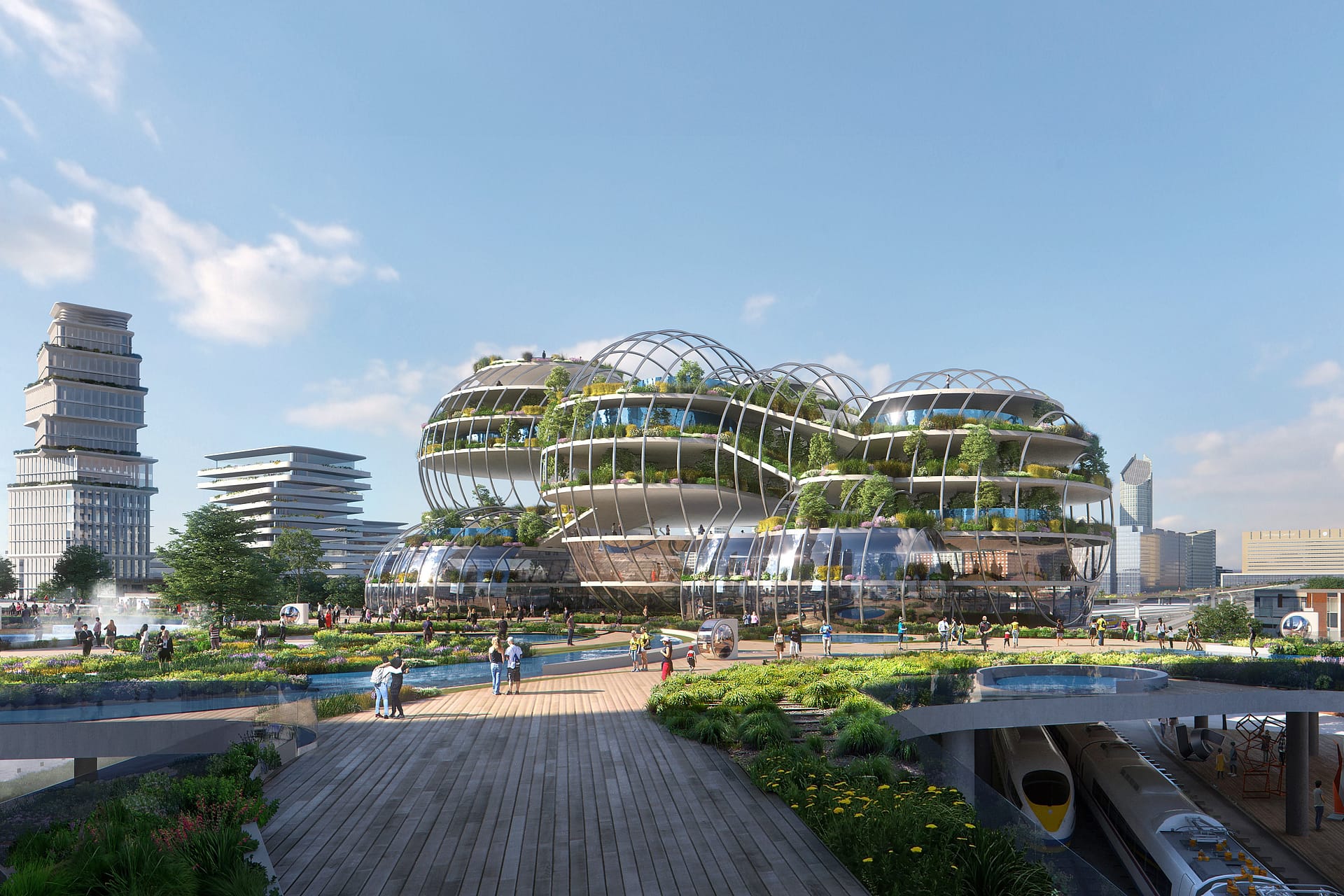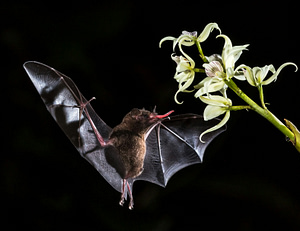A concept for a new green district built above rail infrastructure in the city center of The Hague.
In collaboration with UNStudio and a multidisciplinary team of experts, Metabolic has helped develop the vision for the Socio-Technical City, a concept for a new green district built above rail infrastructure in the city center of The Hague.
The ‘Central Innovation District’ (CID) test site covers a 1 x 1 km area that serves as a major infrastructure hub within the triangle of the Hague Central Station and two nearby stations. Under the plan this space could evolve into a green, double-layered district, where a new urban layer of housing, offices, urban mobility and park-like public space is built over the railway lines. UNStudio’s concept for the Socio-Technical City combines the two largest challenges facing the future of cities – urbanization and sustainability – and examines how an area like the CID can become self-sufficient and energy-neutral while increasing in density.

Catalysts for encounter and innovation
With the elevated urban layer covering the existing railway tracks, UNStudio’s urban vision distinguishes a number of technical ‘domains’, which refer to the major transition issues of our time: energy, circularity, mobility, climate adaptation / water management and food production. These domains are then each envisioned as ‘gateways’: architectural interventions that offer solutions as well as functioning as symbols for each theme. The Socio-Technical City bridges the gap between infrastructure and technology on the one hand, and quality of life and social well-being on the other. The gateways connect neighborhoods and form breeding grounds for innovation.
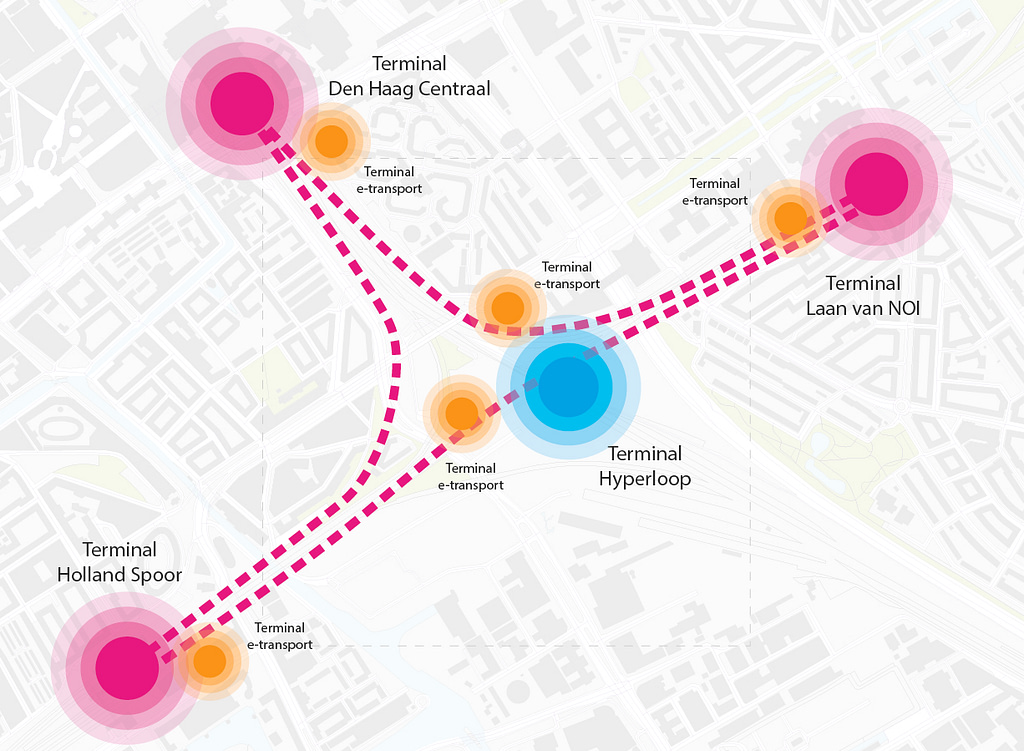
Mobility: the Metropolitan Superhub
The existence of three intercity stations within walking distance of each other presents an opportunity to transform this area into one Metropolitan Superhub; a system of closely linked terminals, comparable in size to Amsterdam Schiphol Airport. It also provides an opportunity to create space for new forms of sustainable mobility such as the Hyperloop, with a free floating system of electric scooters, and possibly self-driving pods, interlinking the different modes of public transport. Over time the Metropolitan Superhub can gradually become an urban center as the city grows all around it and connects to this layer, creating a level of density that is unprecedented in the Netherlands.
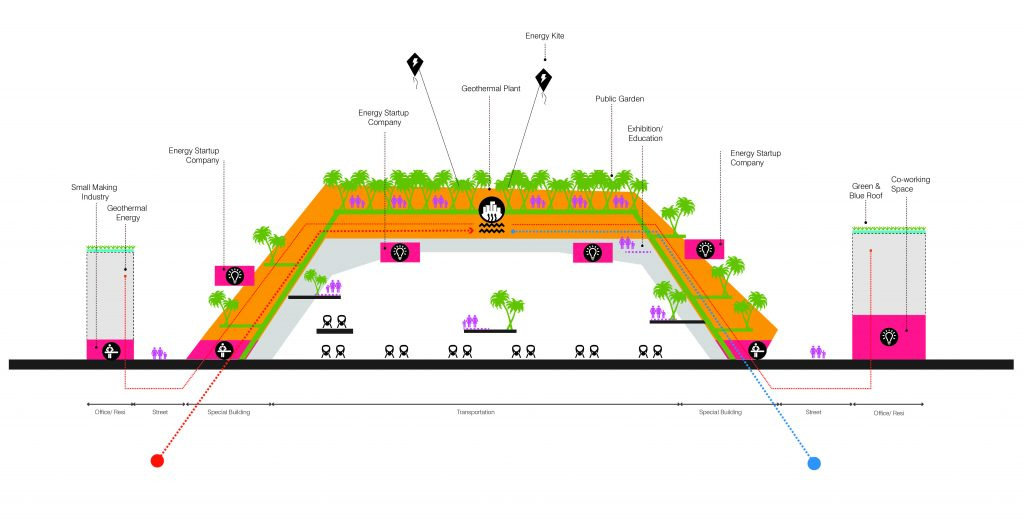
Geothermal Energy Plant: an energy cathedral, city bridge, winter garden and co-working space for start-ups
The geothermal energy plant is the central location of the energy supply and as such is an important gateway for the CID. The geothermal energy plant draws energy from a hot water reservoir that is 2.5 kilometers below ground and supplies it to the surrounding low-rise districts. In return, the low-rise districts generate a surplus of energy via roof-mounted solar panels that can be delivered to the new high-rise buildings. The energy gateway is not only a geothermal power plant, but also a bridge that connects neighborhoods, a winter garden and co-working space for start-ups.
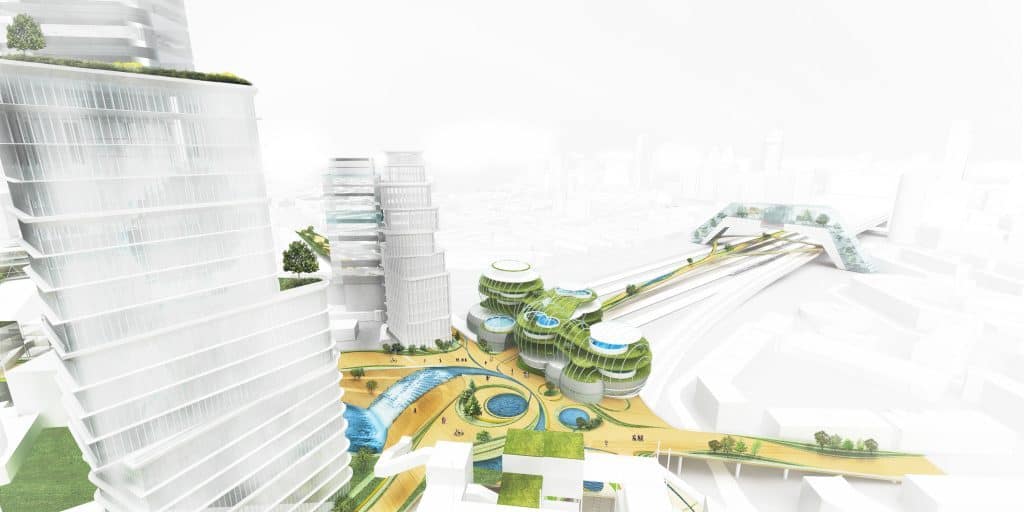
The Biopolus: urban irrigation system with wadis, water squares, canals and waterfalls
In Socio-Technical City the Biopolus forms another gateway, ensuring that waste water from the new part of the city is purified and the nutrients that are released are used for the cultivation of crops. Waste water is pumped through tubes to the highest level, after which it flows to the lowest level via various purification processes, producing drinking quality water which then enters the system again. The localized cycle is complete. The Biopolus is however not merely a water purification plant, it is also an urban farm and a vertical park.

Climate Adaptation: Water plazas
Climate change presents significant risk factors for the area, such as flooding and overheating. Where currently rainwater, waste water and grey water are all disposed of through one drainage system, in the Socio-Technical City this is separated. Waste water is drained through underground pipes, however the relatively clean rain water is re-used and feeds water features in public spaces: an irrigation system of canals, water plazas and waterfalls.

Who is involved?
The project is one of the studies made for ‘The City of the Future’, which focuses on five test locations in Amsterdam, Rotterdam, The Hague, Utrecht and Eindhoven in a joint initiative by BNA Research (the Royal Institute of Dutch Architects), the Delft University of Technology, the Delta Metropolis Association, the municipalities of Amsterdam, Rotterdam, The Hague, Utrecht and Eindhoven, the Directorates-General for Mobility and Transport, the Environment and Water, the Ministry of Infrastructure and Water Management and the Ministry of Interior.
The urban vision for the Socio-Technical City was designed by UNStudio with UNSense (urban technology), Felixx (Landscape Architects), DGMR (Energy), Metabolic (Circularity), Nelen Schuurmans (Climate Adaptation) and Here Technologies (Data Mobility).
